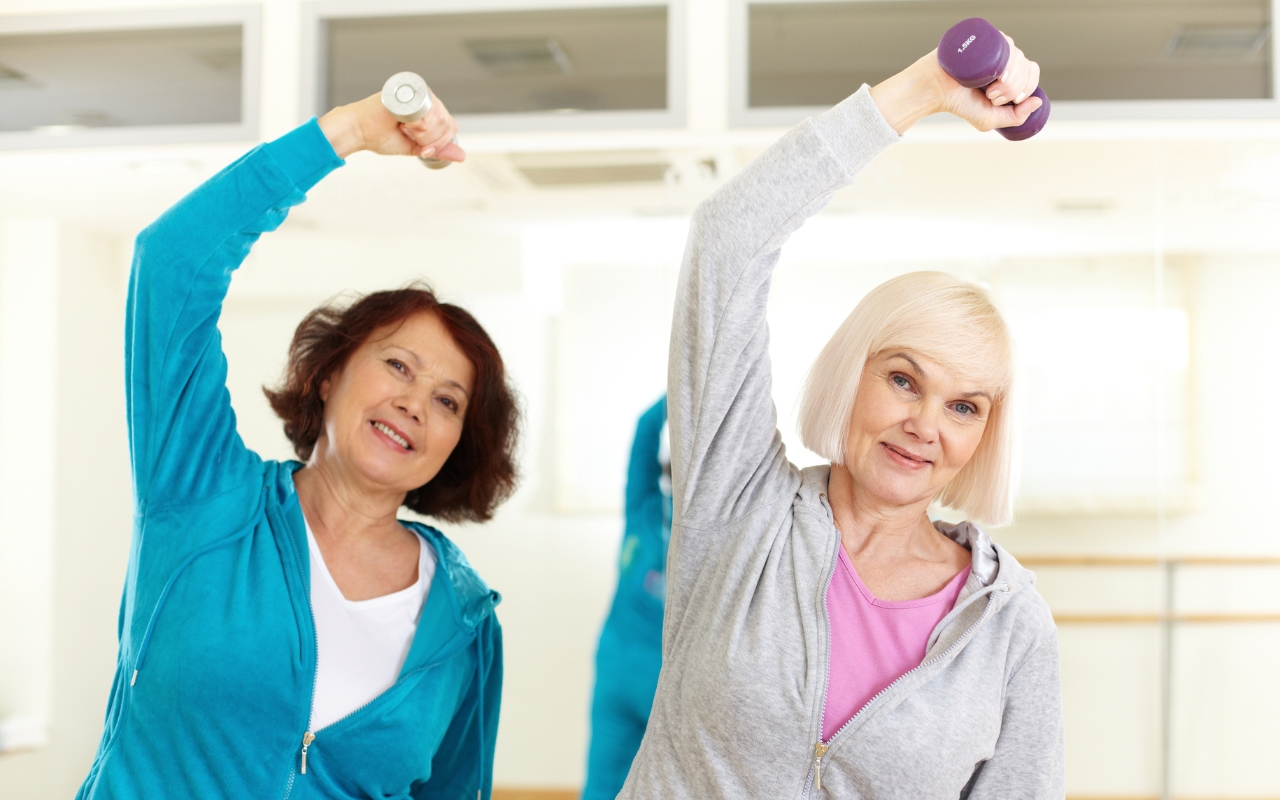Physical activity and strength training are crucial components of healthy aging. For the elderly, these activities help maintain physical health and enhance mental well-being and overall quality of life. This article delves into the myriad benefits of exercise for seniors, practical strategies for implementing fitness programs, and the science behind how exercise positively impacts aging muscles and cognitive functions.
The importance of physical activity for the elderly cannot be overstated. As we age, our bodies undergo numerous changes, leading to decreased mobility, muscle mass, and cognitive abilities. Regular exercise programs can mitigate these effects, promoting a healthier and more independent lifestyle. Research has consistently shown that physical activity reduces the risk of chronic diseases, improves mental health, and extends life expectancy.
The Benefits of Strength Training for Seniors
Strength training, in particular, plays a vital role in maintaining muscle mass and strength, which tend to decline with age. According to research, resistance exercise programs conducted three days per week, progressing to three sets of 8 to 10 repetitions for each exercise, can significantly increase muscle strength and mass in elderly individuals. These benefits are observed in both men and women, emphasizing the universal importance of strength training.
Moreover, strength training helps improve balance and posture, reducing the risk of falls—a common concern among the elderly. Falls can lead to severe injuries, such as fractures, which can significantly impact an older person's mobility and independence. By enhancing muscle strength and coordination, strength training contributes to safer and more confident movement.
Regular strength training also benefits cardiovascular health. Improved muscle function supports better blood circulation and heart health, reducing the risk of cardiovascular diseases. Additionally, strength training aids in maintaining a healthy weight by boosting metabolism and promoting fat loss.
Overcoming Barriers to Exercise
Despite the well-documented benefits of physical activity, many seniors remain sedentary. This reluctance often stems from anxiety, tension, and nervousness in unfamiliar exercise settings. To overcome these barriers, creating a supportive and encouraging environment is essential. Fitness professionals should focus on building rapport with their elderly clients, fostering meaningful conversations, and offering reassurance.
Education plays a significant role in motivating seniors to engage in exercise. Understanding the dangers of inactivity and the benefits of physical activity can inspire older adults to take the first step towards a healthier lifestyle. Incorporating enjoyment and variety into exercise programs can help alleviate anxiety and make physical activity more appealing.
Flexibility in program design is crucial for addressing each individual's unique needs and limitations. Adapting exercises to suit different fitness and mobility levels ensures that every participant can benefit from the program. Offering attainable incentives and recognizing achievements can motivate seniors to stay committed to their fitness goals.
Designing Effective Exercise Programs
Creating an effective exercise program for the elderly requires a comprehensive approach that includes various physical activities. A well-rounded program should incorporate endurance, resistance, flexibility, and balance exercises. This combination ensures holistic benefits, addressing physical and mental health aspects.
Aerobic Exercises
Aerobic exercises like walking, swimming, and cycling are excellent for improving cardiovascular health and endurance. These activities help boost stamina, reduce the risk of heart disease, and enhance overall energy levels. For seniors, starting with moderate-intensity aerobic exercises and gradually increasing the intensity can significantly improve health.
Strength Training
Strength training should focus on upper and lower body muscles, using free weights, resistance bands, or exercise machines. It is essential to start with light weights and gradually increase the load as strength improves. Ensuring proper form and technique is crucial to prevent injuries and maximize the benefits of each exercise.
Flexibility and Balance Exercises
Flexibility exercises like stretching and yoga help maintain joint mobility and reduce muscle stiffness. They also enhance the range of motion and can alleviate pain associated with conditions like arthritis. Balance exercises, such as tai chi, are essential for fall prevention and improving stability and coordination.
Mind-Body Activities
Incorporating mind-body activities, such as meditation and mindfulness practices, can significantly enhance mental well-being. These activities promote relaxation, reduce stress, and improve cognitive functions. Programs like yoga and tai chi offer physical benefits and provide a sense of calm and mental clarity.
Customizing Programs for Individual Needs
Each person's fitness journey is unique, especially for the elderly, who may have specific health conditions or limitations. Customizing exercise programs to cater to individual needs ensures seniors can engage in physical activity safely and effectively. Regular assessments and adjustments to the program can help address any changes in health status or fitness levels.
The Science Behind Exercise and Aging
Understanding the scientific mechanisms behind how exercise affects aging muscles and cognitive functions can provide valuable insights into the benefits of physical activity.
Muscle Adaptations
Muscle mass and strength naturally decline as we age, a condition known as sarcopenia. Resistance training counteracts this process by stimulating muscle protein synthesis and increasing muscle fiber size. Studies have shown that high-resistance training significantly enhances older adults' muscle mass, strength, and functionality.
The main characteristics of practical resistance training are intensity and volume. Adjusting these variables appropriately can lead to different adaptations within the muscles. For instance, high-intensity training increases muscle fiber cross-sectional area and force generation capacity, while lower intensity with higher volume can improve muscle endurance.
Cognitive Benefits
Exercise profoundly affects cognitive health, which is particularly important for the elderly. Physical activity increases blood flow to the brain, promoting the growth of new neurons and enhancing brain plasticity. These changes improve memory, attention, and overall cognitive function.
Mind-body practices like meditation also play a crucial role in maintaining mental health. Meditation techniques focus on calming the mind and reducing stress, improving emotional stability and cognitive clarity. Regular meditation practice has been linked to better attention, memory, and executive function.
Preventing Chronic Diseases
Regular exercise reduces the risk of various chronic diseases, including heart disease, diabetes, and certain cancers. Physical activity helps regulate blood pressure, improve lipid profiles, and enhance insulin sensitivity. These effects contribute to better overall health and reduced healthcare costs.
Moreover, maintaining an active lifestyle can delay the onset of age-related conditions such as osteoporosis and arthritis. Weight-bearing exercises, in particular, strengthen bones and joints, reducing the risk of fractures and joint problems.
Practical Tips for Starting an Exercise Program
Starting an exercise program can be daunting, especially for those who have been sedentary for a long time. Here are some practical tips to help seniors get started:
Consult a Healthcare Professional
Before beginning any new exercise program, it is advisable to consult a healthcare professional. This ensures that the chosen activities are safe and suitable for the individual's health and fitness.
Set Realistic Goals
Setting realistic and attainable goals is essential for maintaining motivation and tracking progress. Goals should be specific, measurable, achievable, relevant, and time-bound (SMART).
Start Slow and Gradual
For beginners, it's essential to start slow and gradually increase the intensity and duration of exercises. This approach helps prevent injuries and allows the body to adapt to new physical demands.
Incorporate Variety
Incorporating various exercises keeps the program exciting and engages different muscle groups. It also reduces the risk of overuse injuries and ensures comprehensive fitness benefits.
Stay Consistent
Consistency is key to achieving long-term benefits from exercise. Encouraging regular participation and making physical activity a part of daily routine can improve health.
Engage in Group Activities
Group activities provide social interaction and support, making exercise more enjoyable and motivating. Joining fitness classes or walking groups can enhance the experience and foster a sense of community.
Monitor Progress
Regularly monitoring progress helps track improvements and adjust the program as needed. It also provides a sense of accomplishment and reinforces the benefits of staying active.
Conclusion
The journey towards healthy aging through physical activity and strength training is rewarding and essential. Seniors can significantly enhance their physical and mental well-being by understanding the benefits, overcoming barriers, and implementing effective exercise programs. The positive impacts of regular exercise extend far beyond the physical realm, fostering a sense of independence, confidence, and overall quality of life.
For more information, you can visit Medical News Today and Healthline to explore detailed studies and expert insights on the benefits of exercise for the elderly. It is vital to embrace the journey of healthy aging with optimism and determination, paving the way for a vibrant and fulfilling life.








